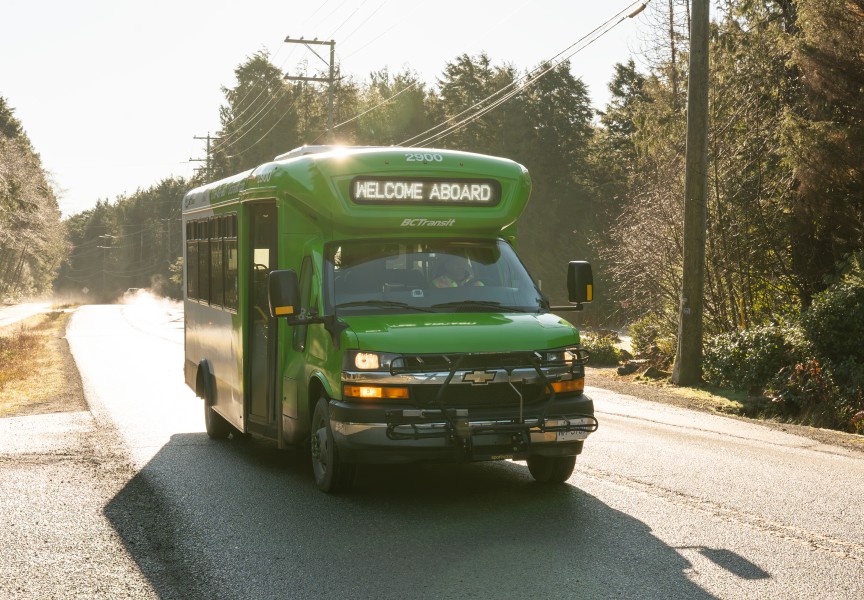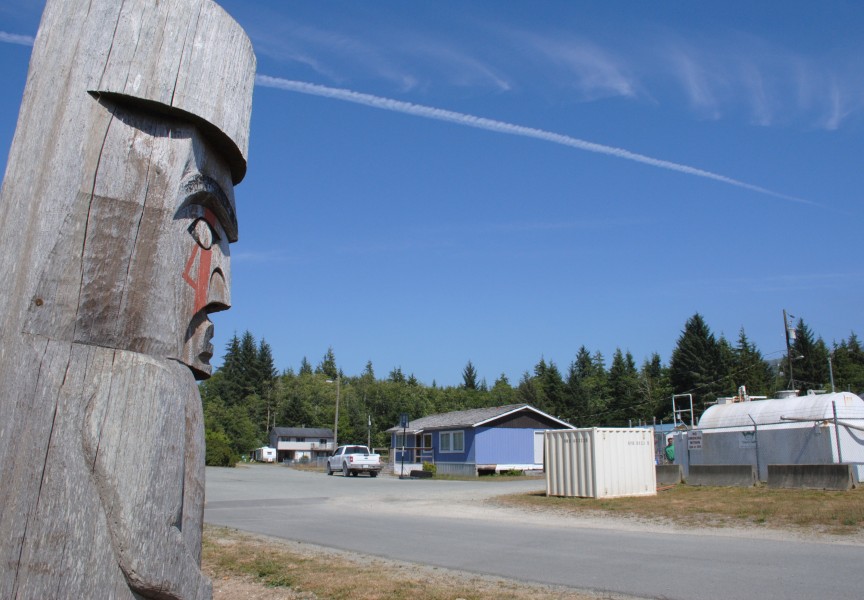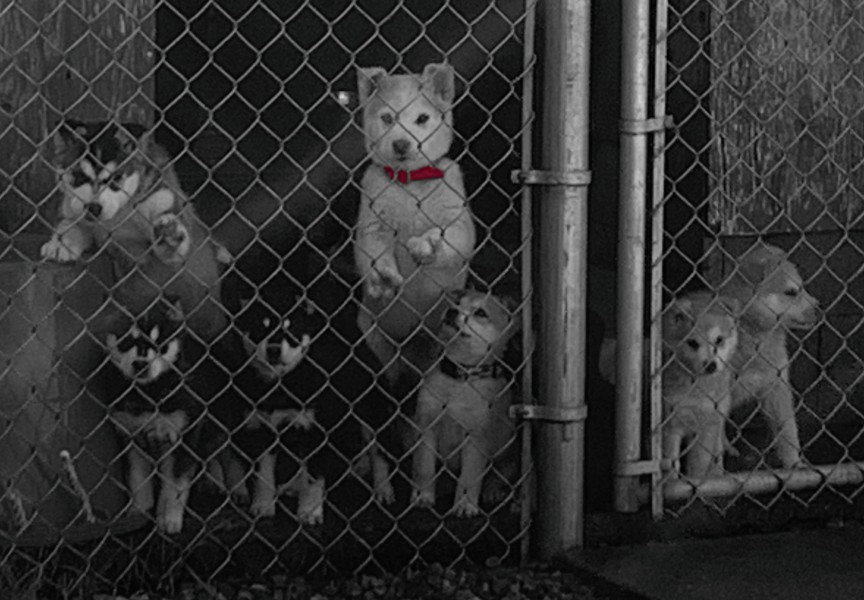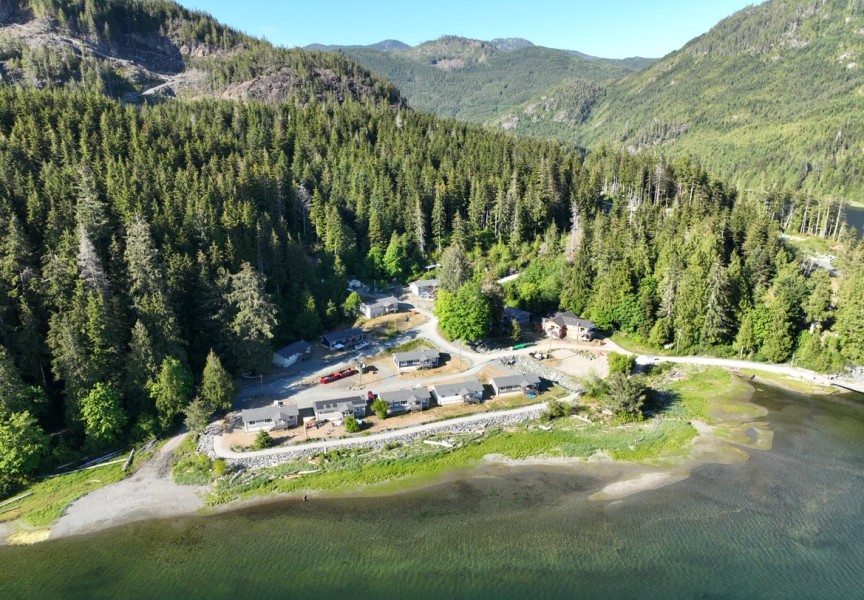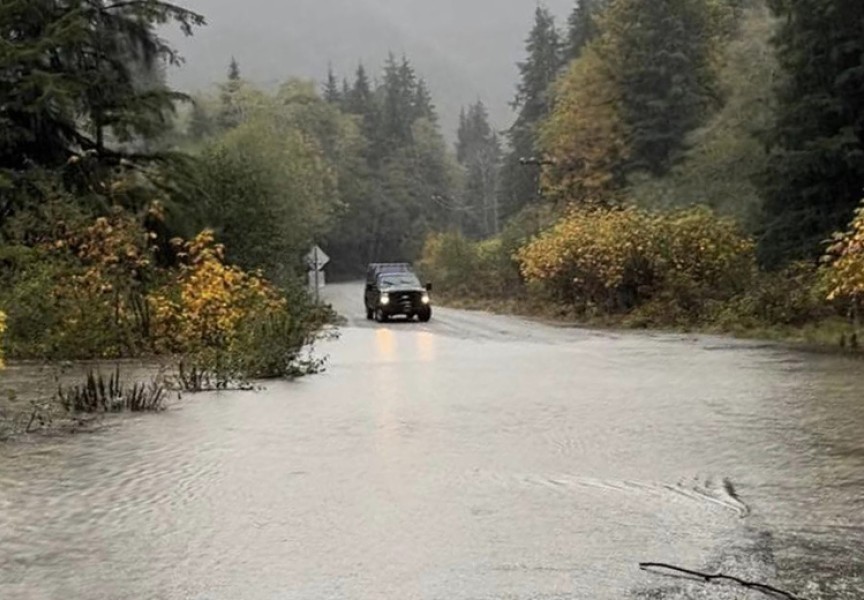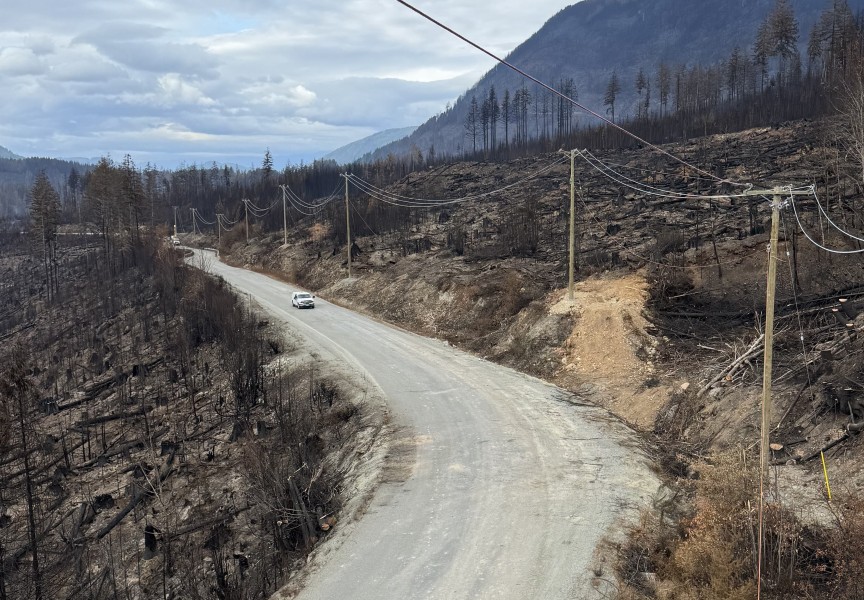More holes have opened on the road to Nitinaht, renewing calls for adequate maintenance of the route as access in and out of the remote community is temporarily severed.
On Thursday, March 20 the Ditidaht First Nation announced that road access to its community at Nitinaht Lake was cut off due to “severe gravel deterioration” at a bridge outside the village. Repair work was scheduled on March 20 from 10 a.m. to 2 p.m., and the following day 7 a.m. to noon. At these times there is no access through Carmanah Main and South Road, part of the route from Nitinaht that runs northeast to Port Alberni.
Photos released by the First Nation show two large enough for a person to stick their leg inside where the wooden bridge meets the gravel road.
Meanwhile access on the other side of Nitinaht is compromised as well, as Caycuse Main to Lake Cowichan “is also impassible due to road washouts,” stated the Ditidaht First Nation in a press release.
“We need to do better to protect the livelihood and safety of our people,” stated Ditidaht Chief Councillor Judi Thomas in the release. “The lack of proper road maintenance and infrastructure puts lives at risk, and we are calling on the government to take immediate action.”
A year ago other holes appeared on the road outside of Nitinaht village. On Feb. 10, 2024 a hole large enough for a person to fall into was discovered when an old wooden culvert collapsed.
Personnel from the First Nation quickly constructed a temporary culvert, but the next month, on March 24, 2024, another hole opened nearby on Carmanah Main. Discovered close to the Nitinaht Hatchery, this hole was five feet wide.
Located on southwestern Vancouver Island, each winter road access in and out of the village on Nitinaht Lake has been a pressing concern for the Ditidaht First Nation. Sections of the route are susceptible to flooding from the Nitinaht River, and during the November migration of chum salmon fish have been seen swimming across the washed-out road.
In early 2023 a 2.8-kilometre bypass was completed to improve winter access, an $1.7-million investment from the First Nation, plus undisclosed assistance from the San Group. But this bypass was added to a section of the road that lies north of where the holes have recently opened.
The road’s designation presents a challenge for improved maintenance. Although Nitinaht residents rely on the route to get home, it is not a public highway but a service road under the jurisdiction of forestry companies.
“Access to Nitinaht Lake and Nitinaht village is predominantly via permit roads that are held by timber forest licensees, who are responsible for maintaining the access route,” wrote the B.C. Ministry of Forests in an email to Ha-Shilth-Sa in March 2024.
But this didn’t stop the province from including Carmanah Main in a detour route for essential traffic while Highway 4 was closed due to a forest fire at Cameron Lake. As the wildfire closed the highway to Port Alberni and other communities on Vancouver Island’s west coast, essential transport relied on the route that passes Nitinaht and Lake Cowichan. Thousands of vehicles, including convoys of transport trucks, used the forestry permit road each day.
“Now is the time to get back to the table with the provincial and local governments, as well as industry, to discuss the development of a secondary route into and out of Port Alberni,” stated Thomas. “The wildfires at Cameron Lake in 2023 led to road closures that severely impacted access to the region, and we must work together to establish a viable and resilient transportation network to prevent further disruptions.”




